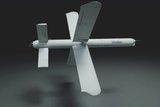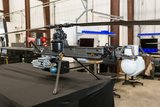How the Israeli Defense Forces overcame Iran’s attack
An Israeli jet being prepared to intercept Iranian UAVs during the 13 April attack. (Image: IDF)
On 13 April, the Israeli Defense Forces (IDF) demonstrated the effectiveness of its combined air defence system, as the use of simulation tools and close cooperation with other countries helped it achieved a 99% kill rate of 330 ballistic missiles, cruise missiles and armed drones launched by Iran.
One Iranian ballistic missile was confirmed to hit Nevatim Airbase in southern Israel’s Negev desert causing minor damage to the base which remained operational.
In recent months, US Central Command and the Israeli Air Force (IAF) have been intensifying efforts to achieve full operational coordination in the case of an attack similar
Already have an account? Log in
Want to keep reading this article?
More from Air Warfare
-
![German Navy in “ramp-up” phase as it welcomes first NH90 Sea Tiger delivery]()
German Navy in “ramp-up” phase as it welcomes first NH90 Sea Tiger delivery
With all 31 aircraft set to be delivered by 2030, the helicopters will gradually replace the ageing Sea Lynx fleet which are due to be retired in 2026.
-
![Germany acquires additional 20 H145M helicopters]()
Germany acquires additional 20 H145M helicopters
The order for the extra helicopters comes from an agreement penned in December 2023, with the German Army receiving the bulk of the platforms.
-
![Anduril UK and GKN Aerospace collaborate on British Army ACP bid]()
Anduril UK and GKN Aerospace collaborate on British Army ACP bid
The pair will submit their demonstrator concept for Project Nyx, a development project for the British Army’s Land Autonomous Collaborative Platform.
-
![US Army command’s Picatinny CLIK common lethal drone interface makes progress]()
US Army command’s Picatinny CLIK common lethal drone interface makes progress
The Picatinny Common Lethality Integration Kit is designed to overcome the issue of unique integration methods between lethal payloads and drones as well as avoiding problematic acquisition conditions created by vendor lock.






















